For years local forager Pascal Baudar has been pushing the envelope of wild gathered flavors. His journey has continued to focus on unique ways to use the natural materials he finds, opening minds to what is possible and discovering deliciousness in surprising places and techniques. Baudar’s first two books on fermentation covered yeast fermentation in “The Wildcrafting Brewer” and lactic acid fermentation in “Wildcrafted Fermentation.” The third book of his fermentation trilogy, “Wildcrafted Vinegars,” focuses on acetic acid ferments.
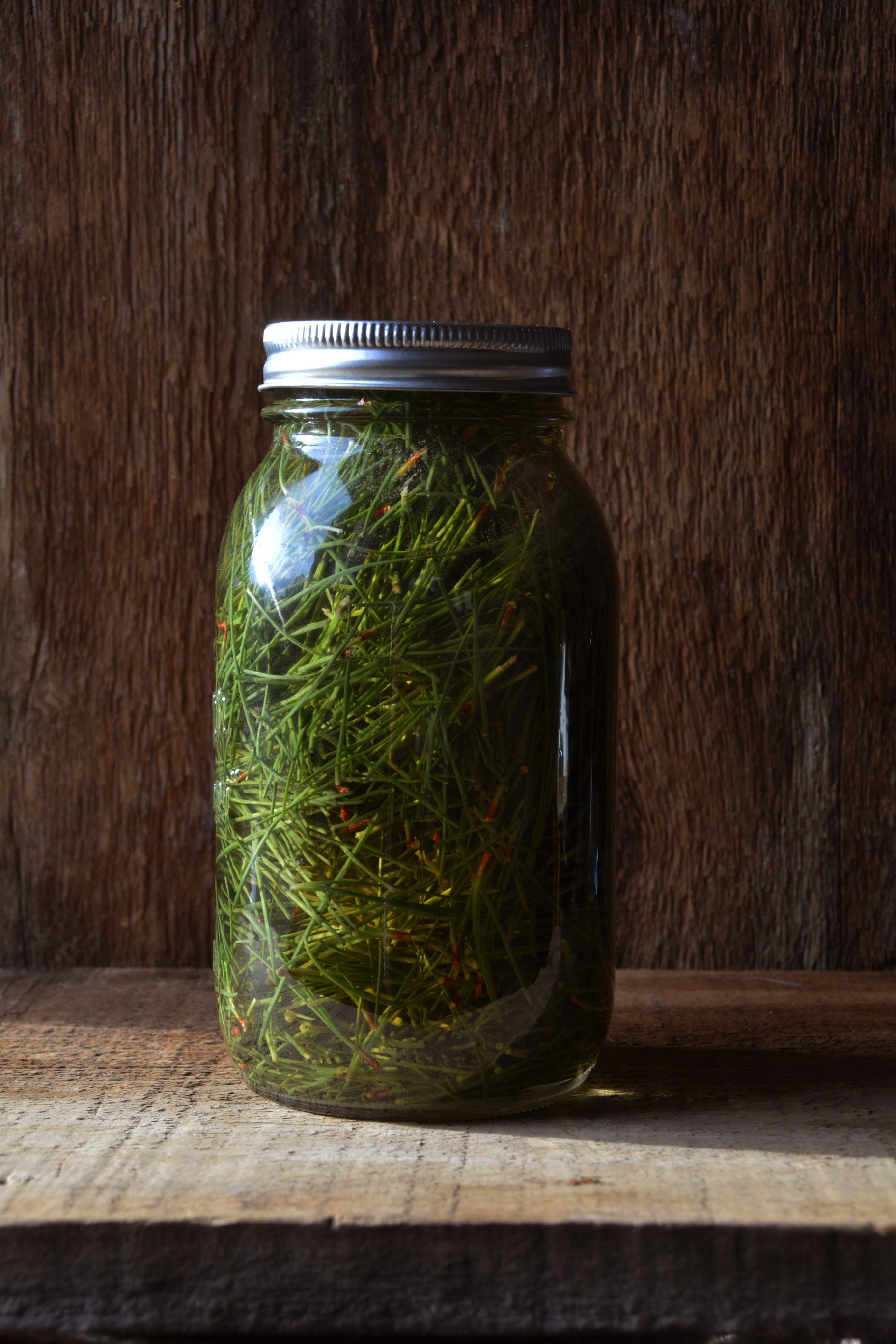
Baudar had over three dozen fermentation jars on his shelves while researching his latest project, including blackberry wine vinegar and yarrow beer vinegar. Photo by Pascal Baudar.
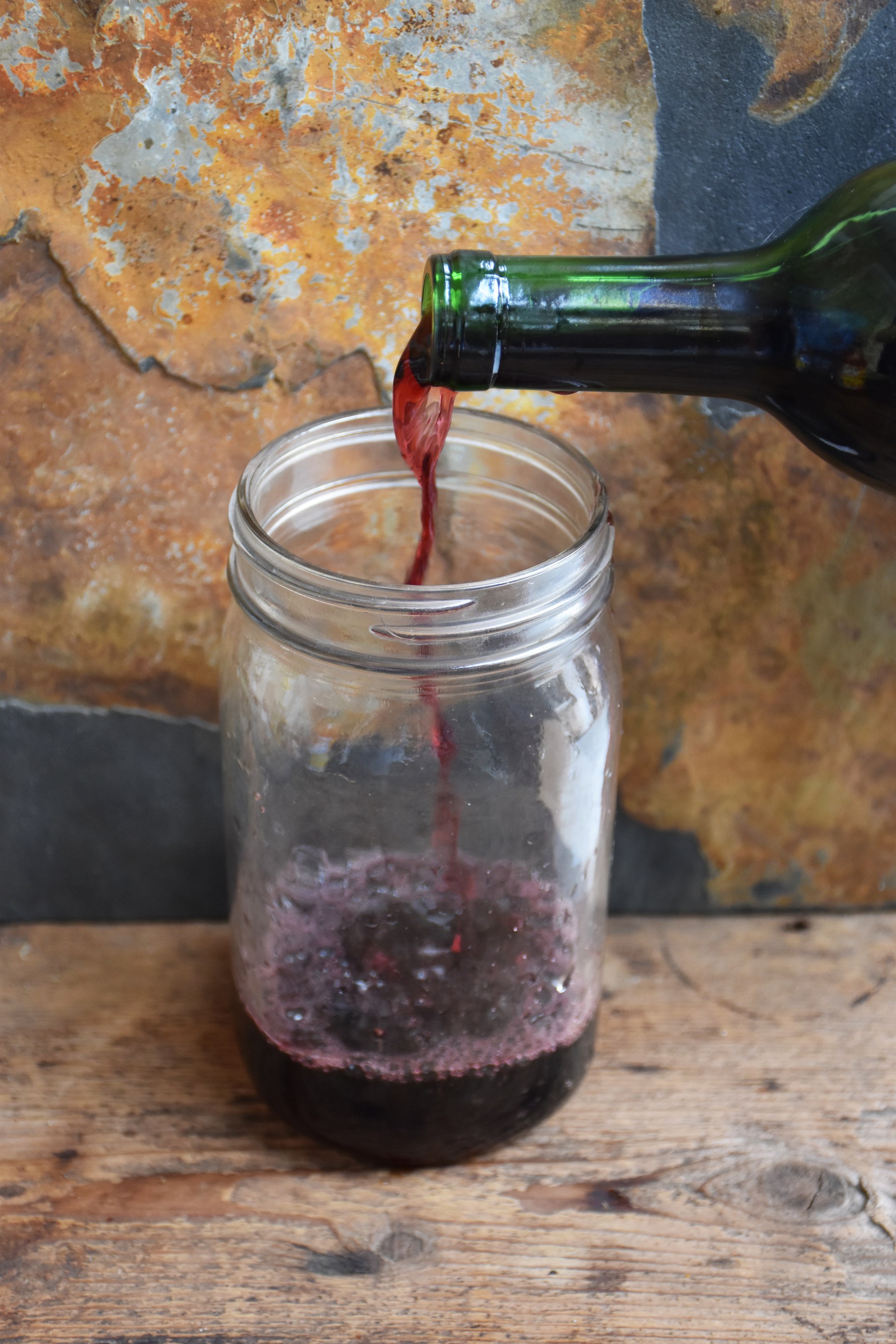
The first step in making unpasteurized vinegar at home is to check the alcohol content of your wine and pour it into a clean jar. If your wine is 12 percent alcohol, fill half the jar. Photo by Pascal Baudar.
METHOD 1: USING UNPASTEURIZED VINEGAR AS A STARTER
Using unpasteurized vinegar is the easiest method to start making your own vinegar at home. The first essential ingredient is raw vinegar. It doesn’t need to be a red wine vinegar—the Bragg brand of unpasteurized apple cider vinegar works well. I haven’t really tried other brands, but they should work, too. The unpasteurized vinegar will be your culture starter to create the vinegar.
The second essential ingredient is red wine. For your first attempt I suggest you use store-bought red wine. From there, you can experiment with other alcoholic beverages. No need to purchase an expensive wine— my favorite red wine vinegar is made with the cheapest wine I could find at the supermarket. Don’t use white wine or sparkling wine yet—those are a bit more complex. Stick to regular red wine.
Remember that your alcoholic beverage should be between 5 and 9 per- cent alcohol to start with; thus, you need to look at the label to determine the alcohol percentage of the wine you purchased. For example, the wine I normally use is 12 percent alcohol and the bottle has a volume of 1 quart (1 L). The alcohol content is therefore too high to make vinegar (as will be the case with most every bottle of wine). So you need to dilute it. I usually add 16 ounces (0.5 L) of water and end up with 8 percent alcohol.
The math is simple: Two parts alcoholic beverage (32 ounces, or 1 L) at 12 percent alcohol combined with 1 part (16 ounces, or 0.5 L) water with 0 percent alcohol gives you a final beverage with 8 percent alcohol. If you use 1 part wine and 1 part water, you would end up with a diluted beverage with 6 percent alcohol, which would also work.
I place the diluted wine (8 percent alcohol) in a jar, then I add my culture (purchased raw vinegar). I like to use around 25 percent of the volume of the wine. So if I have 1 quart (1 L) of diluted wine, I’ll add 1 cup (240 ml) of raw vinegar. Once mixed with the diluted wine, the culture will trans- form the alcohol into acetic acid.
You need oxygen to make vinegar, so cover the jar with a paper towel or clean towel and then secure it with a rubber band or string to protect it from unwanted critters. Now you just need to wait. If all goes well, you’ll see a gooey layer forming on top of the liquid within 3 to 4 weeks. That’s the mother of vinegar forming! I like to leave my vinegar alone for 4 to 6 weeks, letting the vinegar mother grow as big as ½ inch (1.3 cm) thick.You did it!
Then I strain and bottle the contents. This method is pretty much 100 percent effective.
Keep the mother and some of the new vinegar (see “Storing Your Mother of Vinegar,” page 26) for when you’ll need it to make more (Using Your Homemade Vinegar Starter).
In summary, these are the ingredients you’ll need to make a quart (1 L) jar of vinegar:
- 2 cups (480 ml) wine (12 percent alcohol)
- 1 cup water (240 ml)
- Around ¾ cup (180 ml) raw vinegar or more (1 cup [240 ml] would work, too)
If you don’t have a mother of vinegar after 4 to 6 weeks, something went wrong. There are a number of reasons why it could fail: The culture in the original raw vinegar wasn’t alive, the temperature was too cold or too hot, you forgot to dilute the wine, or the vinegar gods just had a bad day. Toss it, and try again with a new raw vinegar. Conversely, during the high-temperature days of summer I’ve had instances of mothers forming within a couple of weeks.
The following excerpt is from Pascal Baudar’s book “Wildcrafted Vinegars: Making and Using Unique Acetic Acid Ferments for Quick Pickles, Hot Sauces, Soups, Salad Dressings, Pastes, Mustards, and More” (Chelsea Green Publishing, October 2022) and is reprinted with permission from the publisher.
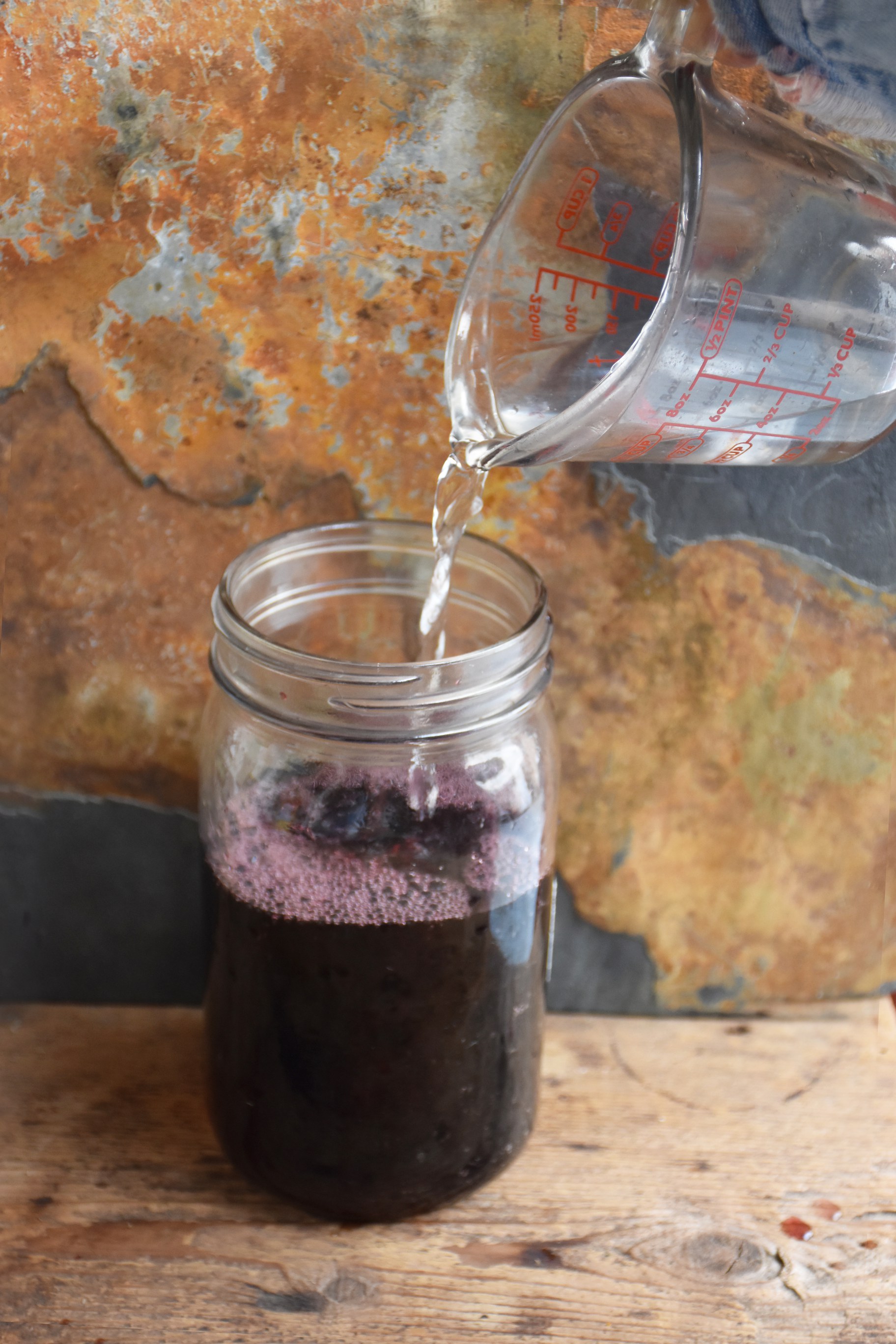
Add ¼ jar of water to dilute the wine. You now have an alcoholic beverage with 8 percent alcohol. Photo by Pascal Baudar.
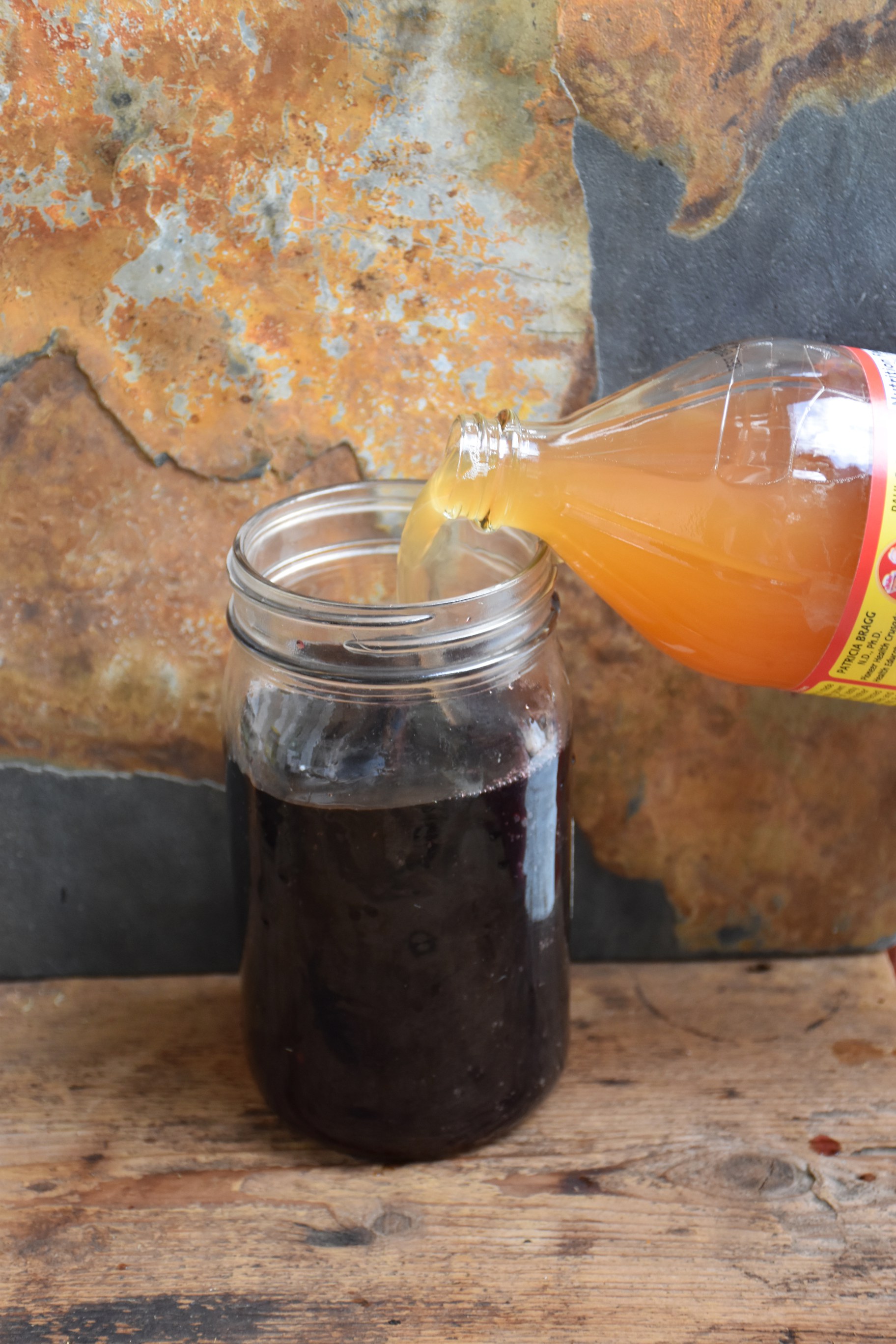
Add around ¼ jar of unpasteurized raw vinegar. Photo by Pascal Baudar.
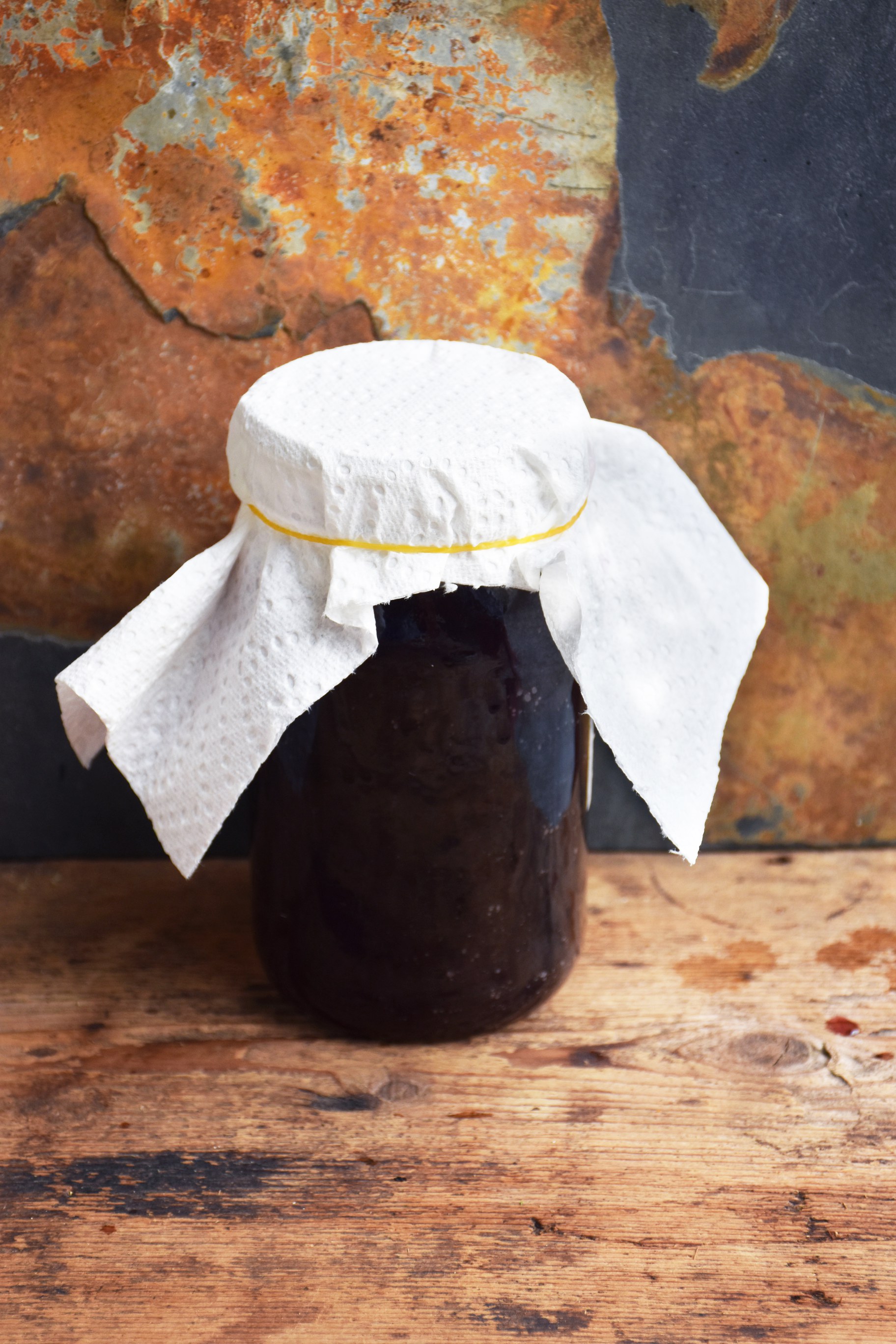
Cover and wait. After 4 to 6 weeks, you should have a mother forming on top. Congratulations! You did it! Photo by Pascal Baudar.
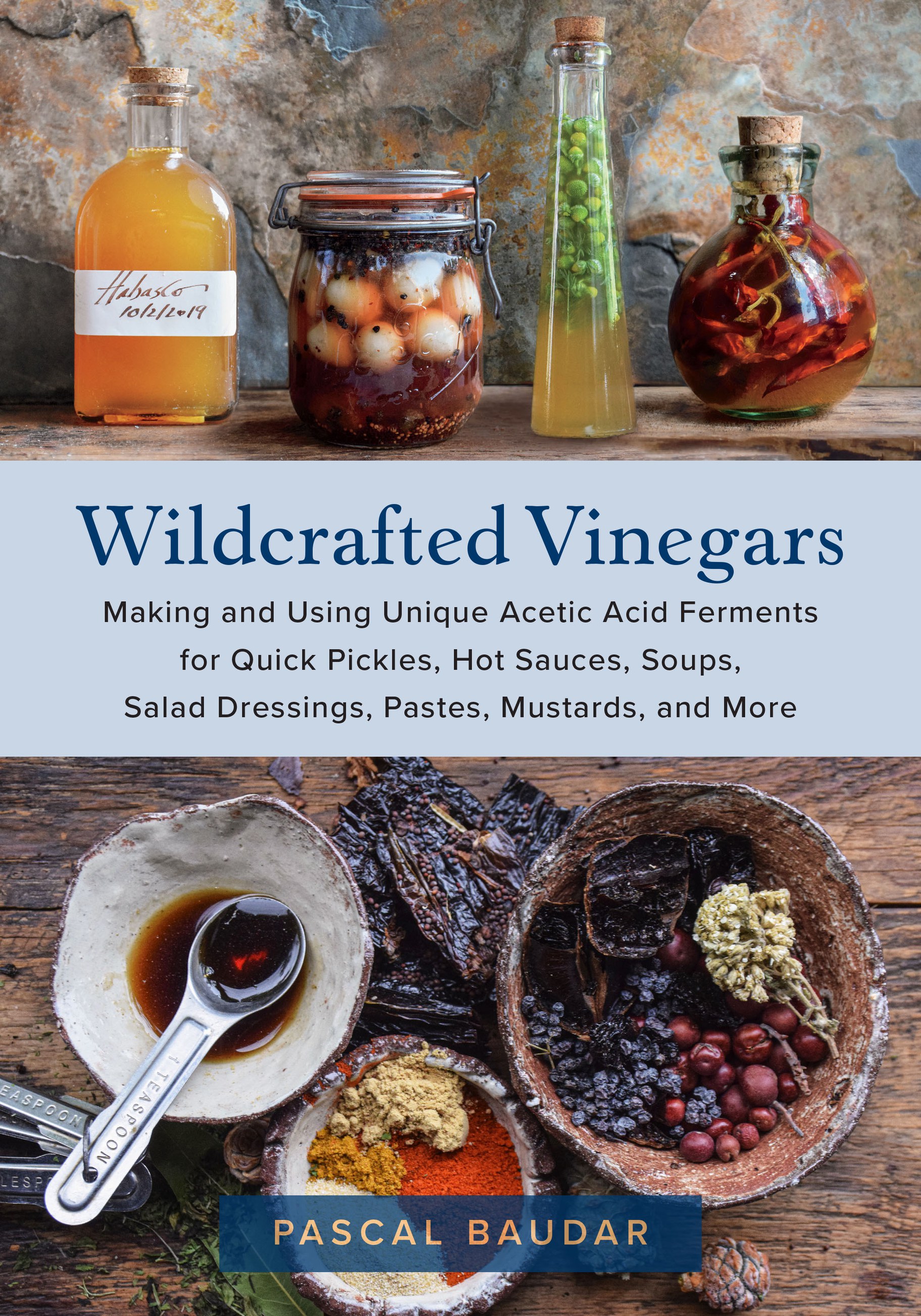
Culinary alchemist Pascal Baudar shares his how-to of making vinegars at home, often using foraged ingredients in “Wildcrafted Vinegars.” Photo courtesy of Chelsea Green.
